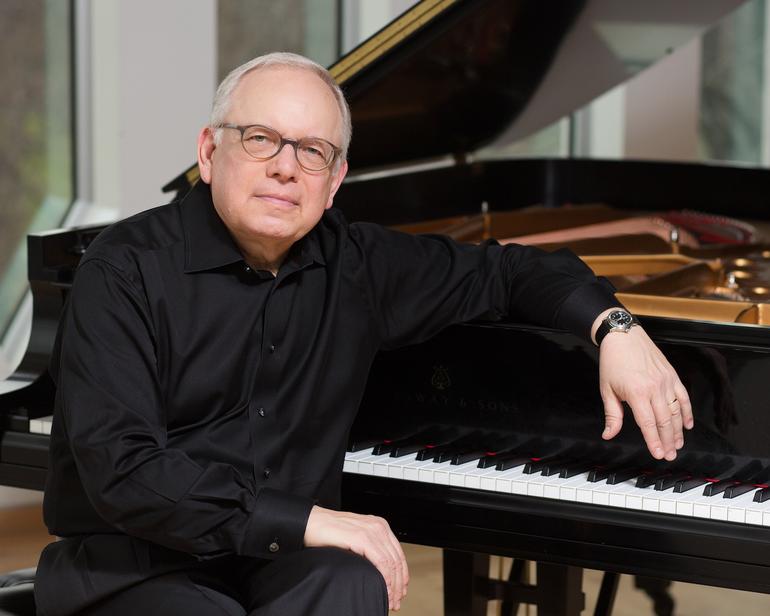Pianist Takács explores middle-period Beethoven with a little help from a friend

Peter Takács performed middle-period Beethoven works in the Key Pianists series Thursday night at Weill Hall.
Peter Takács has made a life’s work of understanding, teaching and, most of all, performing Ludwig van Beethoven.The Romanian-born pianist and scholar, based at Oberlin College in Ohio since 1976, is bringing that formidable knowledge and devotion to three piano concerts at New York’s Carnegie Hall this season — charting Beethoven’s sonatas, as a live complement to his complete box set recorded in 2011 on the Cambria label.
Takács returned to Carnegie’s intimate upstairs venue, the Weill Recital Hall, Thursday night for the second installment focusing on the middle-period point sonatas.
A dissatisfied Beethoven was probing for a “new way” forward in these years, as Takács himself puts it in the program notes for these three recitals. (Beethoven also was beginning to lose hearing by this point, although the implications of that worsening condition for his music will be more fully explored in the final concert.)
The result, as portrayed by Takács, was a weightier, more emotional and compositionally challenging body of work, as Beethoven ushered in the Romantic era at the turn of the 19th century and (mostly) left behind the celebrated boy wonder who had published his first compositions by age 12.
There was a sense of Takács finding his way into the evening’s opener, and almost gingerly approaching the Largo of Sonata No. 17 in D minor, Op. 31, No. 2 (“Tempest”). That tentativeness dissipated quickly, and Takács was off to the races, on a breathtaking run through the first movement’s thunderous ascents and cascading tritones, with passages in between forming a kind of high-wire dance.
As the musical argument changed course, Takács was a companionable guide, easing through the Adagio’s soulful beginning, which gave way to crescendoing trills and arpeggios, and a final Allegretto whose humming, repeated triads seemed to evoke the charge in the atmosphere that lingers after a storm.
Takács was joined by Robert deMaine for the Cello Sonata No. 3 in A Major, Op. 69. Principal cellist of the Los Angeles Philharmonic, deMaine was a spirited and thoughtful partner.
The sonata’s closing Adagio cantabile was a succinct illustration of middle-period Beethoven, beginning plaintively — almost mournfully — before deMaine steered it, using a single sustained note, into a heart-racing exposition and finale.
The second half offered the Andante favori and Sonata No. 21 in C major, Op. 53 — the “Waldstein Sonata,” so named for Beethoven’s royal patron. The former was written as a movement in the latter until friends persuaded Beethoven it didn’t fit.
Takács said it makes an excellent prelude to the sonata, and that’s how he played both on Thursday, combining the favori with the larger piece, uninterrupted — “a one-shot deal,” as he quipped beforehand.
Even here, a hint of a more boyish Beethoven peeked through, with piano lines that rolled toward resolution, only to dart away from the root note at the last possible moment and then playfully circle back around. The Andante was a kind of pleasant stroll into the more demanding sonata, which required — and received — all of Takács technical mastery and emotional intelligence.
Beethoven could hardly have a better or more welcoming advocate. Takács wrapped with an encore, the genial minuet from Sonata No. 18, Op. 31, No 3, which served as a signature for this pianist’s great affection for his subject.
“The Beethoven Experience” concludes in January at Weill as part of the Key Pianists concert series. terryeder.com/index.cfm?e=inner&itemcategory=68992
Posted Nov 14, 2017 at 11:51 am by Veronica Fragman
I was deeply moved by this passionate recital of Mr. Takacs and was further awed by his interpretation of the final concert in January which concluded The Key Pianists series.